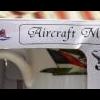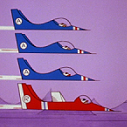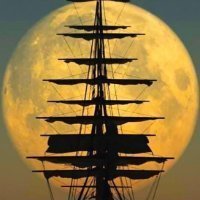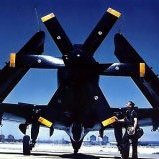

Killingholme
Members-
Posts
2,023 -
Joined
-
Last visited
About Killingholme
- Birthday 10/03/1985
Profile Information
-
Gender
Male
-
Location
UK
Recent Profile Visitors
6,037 profile views
Killingholme's Achievements

Very Obsessed Member (5/9)
994
Reputation
-

Gresley (LNER) teak carriage in N gauge
Killingholme replied to Mjwomack's topic in The Golden Age Of Transport GB
I use the Mike Trice method- which I find to be almost foolproof. Oil paints take a lot longer to dry than acrylics and are a bit of a faff cleaning up, but I've never found anything that can be applied in quite the same fine way to simulate wood grain. Admittedly I haven't tried in 2mm scale, but don't see how it wouldn't work equally well. -
I've always thought model shows should have a special "the kit fought me all the damned way" award in each category. The amount of problem solving, ingenuity, and patience required to get that Bounder into such a good looking model can hardly be compared to someone just throwing $200 of aftermarket at an already shake-n-bake Tamiya kit, can it? Will
-

HMS Havock 1893 - A class Torpedo Boat Destroyer
Killingholme replied to Steve D's topic in Work in Progress - Maritime
The great thing about watching this build is the opportunity to learn about all sorts of naval equipment at the dawn of the age of "modern" warships. I never thought I'd spend a Friday morning going down the rabbit hole of googling Kelvin patented sounding machines and reading about how they work! Will -

HMS Havock 1893 - A class Torpedo Boat Destroyer
Killingholme replied to Steve D's topic in Work in Progress - Maritime
Has this build log now also become a naval arms race?! Will -

Help - Ship in Water Diorama Advice
Killingholme replied to Bill1974's topic in General Maritime modelling chat
I'd echo the words of others who recommend studying how ships behave at sea. I've seen some otherwise very accomplished models ruined by basic errors. The one that made me chuckle was someone who did a model of a destroyer depicted during a heavy turn that was superb, but he'd accidentally depicted the ship heeling IN to the turn rather out from it! And for what it's worth, if you're doing a ship at anchor or in a very light sea, there's a lot to be said for the dead simple technique of using textured watercolour paper, paint and clear varnish method! Only costs about 50p in materials if you make a mess of it! https://www.keymodelworld.com/article/realistic-seascapes -
The trick to this is get what's referred to as lining-off right. Once you've done this you'll be able to visualise which planks will run back to the sternpost, and which will run upwards towards the transom beam. There's some good tutorials on Modelshipworld https://modelshipworldforum.com/resources/Framing_and_Planking/Lining Off your hull for planking.pdf And siplified technique here: https://suburbanshipmodeler.com/2018/11/26/planking-the-hull/ Studying the ships's actual lines might help you visualise it too as they're more detailed than what you seem to have on the kit drawings. https://www.reddit.com/media?url=https%3A%2F%2Fi.redd.it%2F5328x2142-original-plans-for-the-french-paddle-frigate-v0-eq1ykiz8kwia1.jpg%3Fs%3Dd217ab58d3ecbe431154ca65be46b53f3e133b9f
- 200 replies
-
- 1
-

-

HMS Havock 1893 - A class Torpedo Boat Destroyer
Killingholme replied to Steve D's topic in Work in Progress - Maritime
Just when you think the experience of crewing an early TBD couldn't be any more grim... -

HMS Havock 1893 - A class Torpedo Boat Destroyer
Killingholme replied to Steve D's topic in Work in Progress - Maritime
Crickey, that's really coming alive now. The more detail you add the more I get a sense of scale. This vessel must have been an absolute nightmare experience. I feel a bit seasick just looking at the size of those hatches and imagining what it must have been like working below! Will -
I don't know about the French, but the Royal Navy's initial experiments with paddle wheel frigates used wooden paddles. All-Iron construction was adopted in the 1840s as engine horsepower increased, and more complicated paddle mechanisms such as "feathering" paddles only really came along in the 1850s. So I think you're safe enough leaving them in varnished wood. The use of varnished wood as a decorative contrast to glass-black painted hulls was actually something the Royal Navy did with their own board models in the 19th century. Personally, I think it's a very attactive effect. https://www.rmg.co.uk/collections/objects/rmgc-object-66063 If you're interested in the history of the paddle frigates, the book you want is "Paddle Warships: The Earliest Steam Powered Fighting Ships" by D.K. Brown. Will
- 200 replies
-
Didn't mean to take a swing at the kit (it's by no means the worst cuplrit of that time in the '70s and '80s when European wooden kit manufacturers comitted some absolute howlers. For example, Occre and Mamoli have been offering a "HMS Beagle" kit for decades that is based entirely on a reworked 1950s Revell plastic kit of HMS Bounty!). I'd certainly never want to diminish your enjoyment of building the kit. I just thought you might be interested in the history of these paddle frigates and maybe consider making a few tweaks to your kit could create a more accurate impression of the vessel type and hence, a more unique model. Annoyingly, after a few minutes of Googling, I'm starting to feel the urge to add a paddle frigate to my collection. Even as an evolutionary dead-end, I find them strangely interesting.
- 200 replies
-
To be fair, It's not far off in general principles. I'd be personally tempted to omit the rather fanciful deckhouses/ bridge structure, and alter the stern galleries to be a little more realistic (although it appears she really did have both main and quarterdeck galleries- something that looks decidedly odd- almost like she was razeed!) With some careful painting and rigging, I think a very nice result could be had. It might be a fun little project in going beyond what's in the kit box and making some changes and scratchbuilding a few things. Here's the plan for her https://www.shipmodell.com/index_files/0PLAN_ATLAS1.html (towards the bottom of the page) This thread might be of some use as well when it comes to the general disposition of these early French paddle frigates- no images of L'Orenoque, but plenty of good photos of her contemporaries showing all the usual definiting French characteristics of the period. https://5500.forumactif.org/t3752-fregate-a-roues-la-caraibe-perdue-en-janvier-1847 Will
- 200 replies
-
- 1
-

-
If you're interested in reading more about how these vessels came about there is an article in Mariner's Mirror Vol. 73, Issue 3 (August 1987) Roberts, S. The French Transatlantic Steam Packet Programme of 1840. I'm afraid I don't have access to such earlier additions digitally, but older issues of MM are usually quite cheap to pick up on ebay or abebooks. Will
- 200 replies
-
Not sure where Mamoli got their information from, but Orenoque was originally a member of a (loose) class of 18 steam packets (paquebot) built as part of a French government-backed venture to wrestle the Trans-Atlantic trade back from the British commercial operators that had dominated the packet trade in the 1830s. They were essentially a response to Brunel's groundbreaking SS Great Western. The French government-backed venture wasn't a success (put simply, the British were already ahead in the development of steam technology and the French government made the mistake of loaning the money to build packets intending that the vessels would also be suitable for military reserve use. Consequently this meant they were much heavier built, and therefore poorer commercial rivals to the the British packets). Once the venture failed, the 18 vessels were brought into the French Navy proper. Some that had already entered civilian service retained their fittings, but those on the slips or awaiting fitting out were completed as conventional small paddle frigates. They ended up more usefully described as corvettes as they couldn't carry the weight of ordnance originally specified for them. Orenoque was the last in the "class", such as it was. https://www.shipscribe.com/marvap/220b.html. Given their civilian origins, they were used for a variety of diplomatic and colonial missions, with the class lead, Gomer, notably conveying Louis-Philippe to the UK in 1844 during one of the unusual bouts of peace of that broke out between us and the French periodically throughout the 19th century. I think Mamoli has been a little 'imaginative' in their interpretation of what these vessels looked like. Here's a starboard profile of another packet in the same construction batch- Panama https://www.shipscribe.com/marvap/ And here's another French packet (the prototype of the class) Gomer I have a few reference works for paddle warships in the Royal Navy (and there's precious few dedicated works on that neglected topic), but absolutely nothing for contemporary French practice! It's quite an obscure topic! Good luck with the build. It looks like a decent sized model- challenging, but not overhelming. Will
- 200 replies
-

HMS Havock 1893 - A class Torpedo Boat Destroyer
Killingholme replied to Steve D's topic in Work in Progress - Maritime
Your model gives some sense of what 'hard lying' actually meant for the poor sods who had to crew these ridiculous contraptions. It would be fascinating to compare your finished model to your HMS Medea. Was there a particular reason you chose to model the latter, by the way? Will




.thumb.jpg.b4a5069fd2c2dd5708ce1694345c5b11.jpg)






